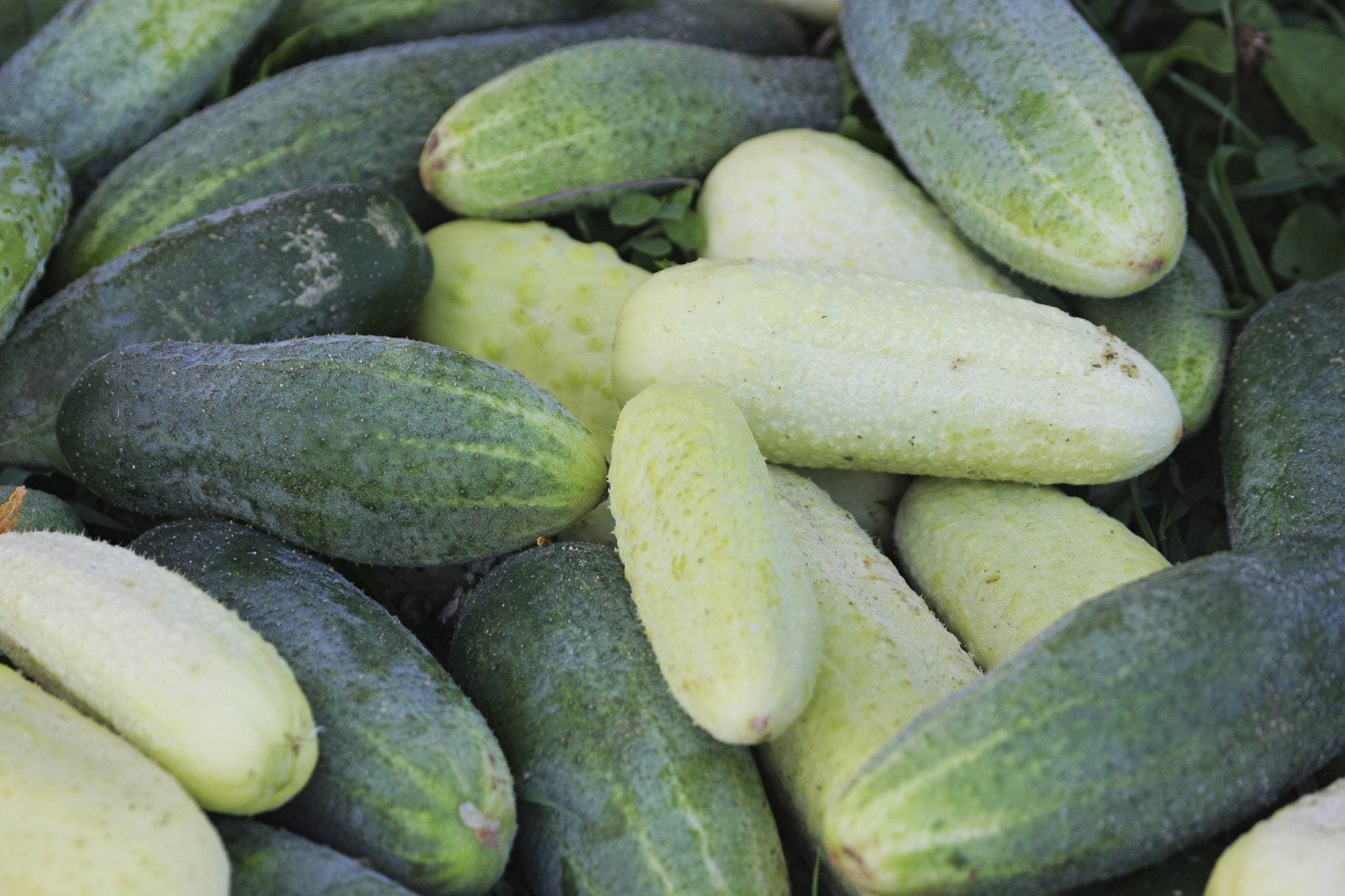Cucumber Varieties: Learn About Different Types Of Cucumbers Plants

There are basically two types of cucumber plants, those that are eaten fresh (slicing cucumbers) and those that are cultivated for pickling. Under the umbrella of these two common cucumber types, however, you will find a wealth of different varieties suitable for your growing needs. Some may be smooth or spiny, some may have lots of seeds or very few, and some may be more vining in habitat or bushy. Learning a little bit about different cucumber varieties will help you to decide which is right for your needs.
Growing Requirements for Common Cucumber Types
Whether growing slicing or pickling cucumber varieties, both types of cucumber plants have the same requirements. Cucumbers thrive in fertile, well-draining soil in full sun exposure. These warm-season veggies should be planted after all danger of frost has passed in your area and the soil temps are at least 60-70 degrees F. (15-21 C.). Seeds are usually planted in hills with 4-5 planted at a depth of one inch (2.5 cm.). Hills of cucumbers should be spaced 3-5 feet (91cm.-1.5m.) apart in rows 4-5 feet ( 1-1.5m.) apart for vining types or space bush varieties of cucumber 3 feet (91 cm.) apart between hills and rows. When the plants have a couple of leaves, thin the hill to just a couple plants. If you want to get a jump start on your cucumber crop, start seeds indoors 2-3 weeks prior to the actual planting date. Transplant the seedlings when they have at least two leaves but be sure to harden them off first.
Types of Cucumber
Pickling cucumbers are usually shorter than slicing cukes, 3-4 inches (7.5-10 cm.) long with thin skins and spines. They often have striated skin coloration with gradations of dark green to light green at the blossom end. They are generally ready for harvest sooner than their slicing cousins but their harvest is shorter, about 7-10 days. Slicing cucumbers bear longer fruit, around 7-8 inches (17.5-20 cm.), and have thicker skins than pickling varieties. More often than not their skin is a uniform dark green, although some cultivars have a stippled coloring. They fruit later than pickling cucumbers but bear fruit longer, for about 4-6 weeks. The cucumbers you see at the grocers are usually this type of cucumber. Sometimes referred to as American slicing cucumber, their thicker skin makes them easier to ship and their lack of spines is more appealing to many consumers. Some people add a third cucumber classification, cocktail cucumbers. As you may have guessed, these are small, thin skinned fruits that are sometimes called “snack cucumbers,” as they are easily eaten in a few, crunchy bites.
Varieties of Cucumber
Among both the slicing and pickling varieties, you will find spineless, thin skinned and even burpless cultivars. Burpless cucumbers have been chosen because of their inability to cause gas build up, which for some people can be extremely uncomfortable. Cukes that foster gassiness in some people are high in cucurbitacins, the bitter compounds found in all cucurbits – cucumbers being no exception. It seems that seedless, thin skinned varieties have a lower cucurbitacin amount than their counterparts and are, thus, often termed “burpless.” There are many varieties of cucumber often with their name a reference to the area of world they are most commonly cultivated.
- One of the most common cucumber types is the English or European cucumber. These cukes are almost seedless, thin skinned without spines and long (1-2 feet in length) (30-61 cm.). They are marketed as a “burpless” cucumbers and have a mild flavor compared to many other types. Because they are grown in hot houses, they also tend to be more expensive.
- Armenian cucumbers, also called snakemelon or snake cucumber, have very long, twisted fruit with dark green, thin skin and pale green stripes the length of the fruit – which turns yellow and aromatic as it ripens and has a mild flavor.
- Kyuri, or Japanese cucumbers, are slim, dark green with small bumps and thin skins. They are crisp and sweet with tiny seeds. I grew them last year and highly recommend them. They were the most delicious cucumber I have ever had and bore fruit for weeks. This variety does best when trellised or otherwise vertically grown. Japanese cucumbers are also “burpless” varieties.
- Kirby cucumbers are more often than not those you buy as commercially sold pickles. These cucumbers are usually unwaxed and are crisp, thin skinned with tiny insignificant seeds.
- Lemon cucumbers are as the name suggests, the size of a lemon with pale lemon hued skin. As this variety ripens, the skin becomes a golden-yellow with fruit that is sweet and crisp.
- Persian (Sfran) cucumbers are akin to American slicing cucumbers but a bit shorter and more compact. These cukes are juicy and crunchy. Persian cucumbers are sturdy enough to withstand heat and are wonderful tossed into a stir-fry.
Gardening tips, videos, info and more delivered right to your inbox!
Sign up for the Gardening Know How newsletter today and receive a free copy of our e-book "How to Grow Delicious Tomatoes".

Amy Grant has been gardening for 30 years and writing for 15. A professional chef and caterer, Amy's area of expertise is culinary gardening.
-
 Try The Trend – Turn Any Bed Into A Keyhole Garden With This Clever In-Ground Composter
Try The Trend – Turn Any Bed Into A Keyhole Garden With This Clever In-Ground ComposterKeyhole gardening is an efficient and sustainable practice that saves space. Get started on this DIY project quickly and easily with an in-ground composter.
By Bonnie L. Grant
-
 4 Superfast Composting Methods: Turn Waste Into Garden Gold In 30 Days Or Less
4 Superfast Composting Methods: Turn Waste Into Garden Gold In 30 Days Or LessTry the fastest composting methods to turbocharge your pile and transform kitchen scraps and garden waste into finished compost in just a few weeks.
By Mary Ellen Ellis